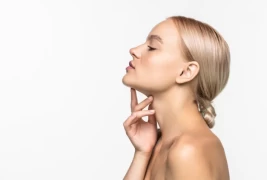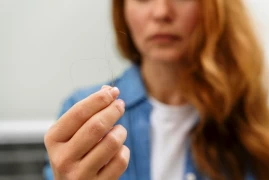
Botox for Sweating Treatment: Therapeutic and Aesthetic Applications
- Botox for Sweating Treatment: Therapeutic and Aesthetic Applications
- What is Botox?
- What is Excessive Sweating?
- What Are the Consequences of Excessive Sweating?
- How Does Botox Sweating Treatment Work?
- Who Is a Suitable Candidate for Botox Sweating Treatment?
- How Does the Treatment Process Work?
- Benefits and Side Effects
- In Conclusion:
Sweating is a natural response of the human body and occurs in situations such as hot weather, exercise, or stress. However, some individuals may experience excessive sweating, which can lead to both physical and psychological discomfort. Fortunately, Botox (Botulinum Toxin) treatment for sweating offers an effective solution to this problem. In this article, we will explore how Botox sweating treatment works, who it is suitable for, and its potential benefits.
What is Botox?
Botox is a toxin produced by the bacterium Clostridium botulinum. However, when used in small quantities, it can be safely and effectively used for therapeutic purposes. Botox has a mechanism of action that inhibits the release of substances that facilitate nerve transmission, effectively interrupting the transmission between nerves and the target organ. This interruption of nerve transmission temporarily halts the functions of the organ reached by the nerve. This property is used to treat excessive sweating by preventing nerve endings from stimulating sweat glands.
What is Excessive Sweating?
Excessive sweating, known as hyperhidrosis, is a condition where sweat glands work more than usual. This condition is typically observed in areas such as the underarms, palms, and the soles of the feet.
What Are the Consequences of Excessive Sweating?
Excessive sweating (hyperhidrosis) not only leads to physical discomfort but can also cause psychological and social problems. Here are potential consequences of excessive sweating:
- Loss of Confidence: Individuals experiencing excessive sweating often lose their confidence. Stains on clothing and the development of body odor due to sweating can diminish self-confidence.
- Social Isolation: Excessive sweating can lead to social isolation. People may avoid social activities due to concerns about sweating. Those who feel embarrassed about sweating in public settings may limit their social interactions.
- Psychological Effects: Excessive sweating can lead to anxiety, depression, and other psychological problems, or exacerbate existing ones. The fear of sweating can negatively impact a person's overall quality of life.
- Skin Issues: We observe that continuous sweating can lead to skin irritation and dermatitis. Prolonged contact of sweat with the skin can trigger various skin conditions.
- Clothing Problems: Excessive sweating can cause clothing-related issues. Constant sweating can result in clothing stains, limiting one's choice of attire.
- Work-Related Issues: Excessive sweating can affect job performance. Individuals with sweaty palms, for example, may have difficulties handling objects or performing tasks that require precision.
- Relationship Problems: Excessive sweating can create problems in personal relationships. Partners or friends may be bothered by a person's constant sweating and the resulting body odor.
- Odor Problems: Accumulated sweat interacting with skin bacteria can lead to body odor. This unpleasant odor can hinder a person's interactions with others.
How Does Botox Sweating Treatment Work?
Botox sweating treatment works by temporarily reducing the excessive activity of sweat glands, thereby controlling sweating. During the treatment, Botox is injected to the depth where sweat glands are located. This temporarily halts the stimulation of sweat glands by nerve endings.

Who Is a Suitable Candidate for Botox Sweating Treatment?
Botox sweating treatment is suitable for individuals experiencing excessive sweating who have not achieved satisfactory results with other treatment methods. It is necessary when excessive sweating impairs a person's quality of life or leads to skin problems. Additionally, it is recommended for cosmetic purposes.
How Does the Treatment Process Work?
Botox sweating treatment is generally a simple and quick procedure that involves the following steps:
- Examination and Evaluation: Initially, as dermatologists, we assess the severity of excessive sweating and the necessity of treatment.
- Injection: We administer Botox injections to the specified areas. While injections are typically painless, we may use a numbing cream in sensitive areas.
- Results: Following the treatment, we expect the effects to become noticeable within a few days, with a full effect taking several weeks to develop.
Benefits and Side Effects
Botox sweating treatment offers several benefits, including:
- Reduction or cessation of excessive sweating
- Increased personal confidence
- Greater comfort and security in clothing
- Improvement in social and work relationships
However, like any medical procedure, Botox sweating treatment may have some side effects. The most common side effects include temporary sensitivity, bruising, or pain at the injection site. These side effects typically resolve within a few days.
In Conclusion:
Botox sweating treatment is an effective solution for individuals experiencing excessive sweating. However, it is important to consult with a dermatologist before any medical procedure. This treatment significantly reduces sweating problems and enhances a person's quality of life.
Stay healthy…

Sp. Dr. Serra Hande Öcal
Dermatologist





